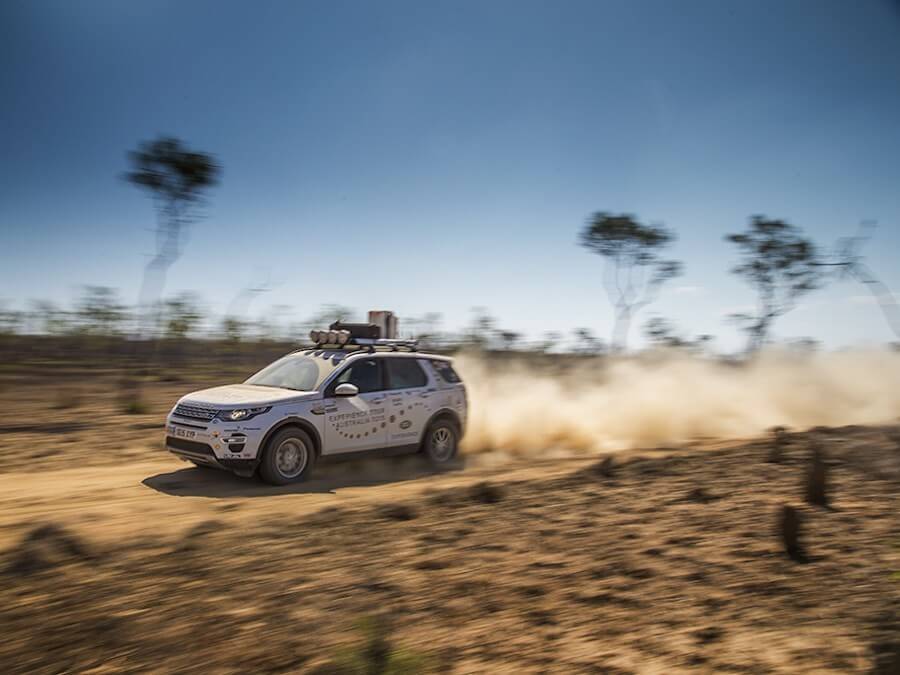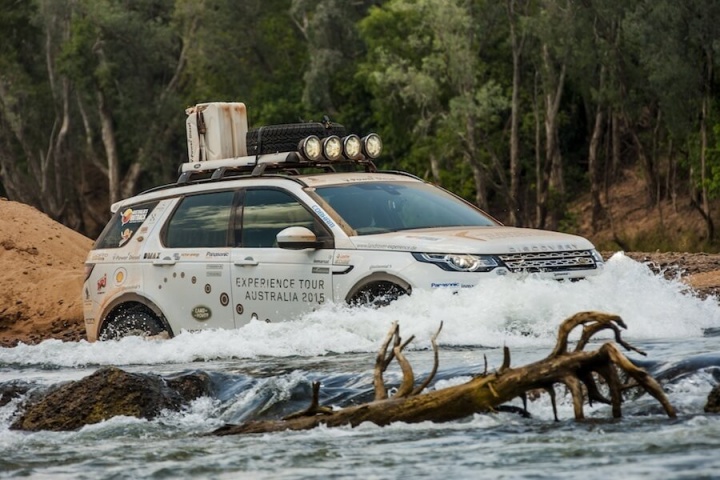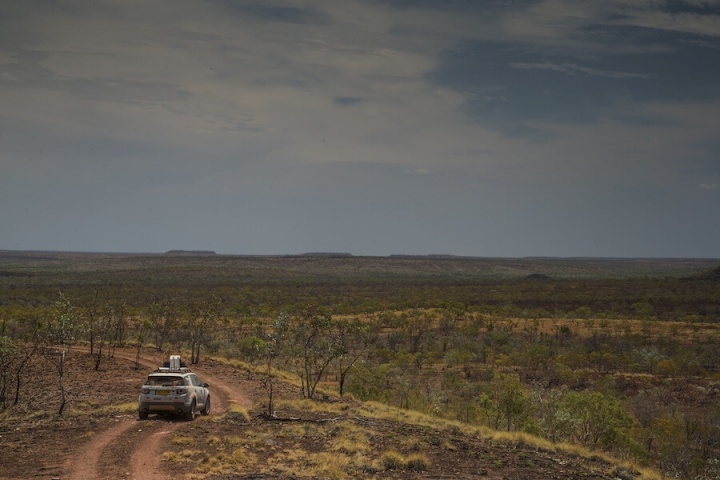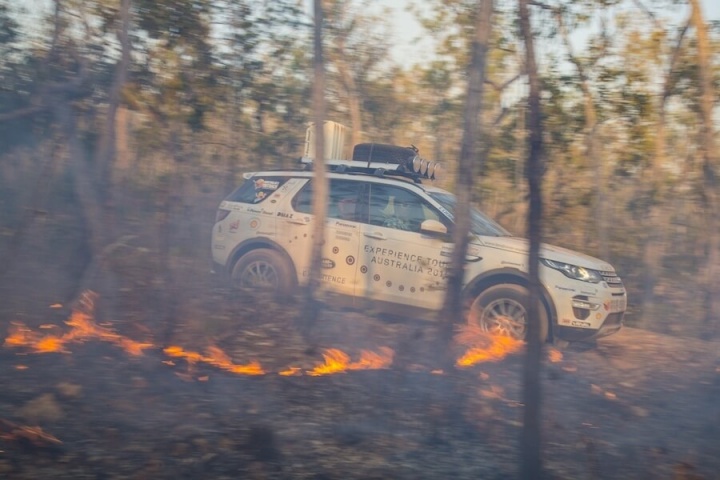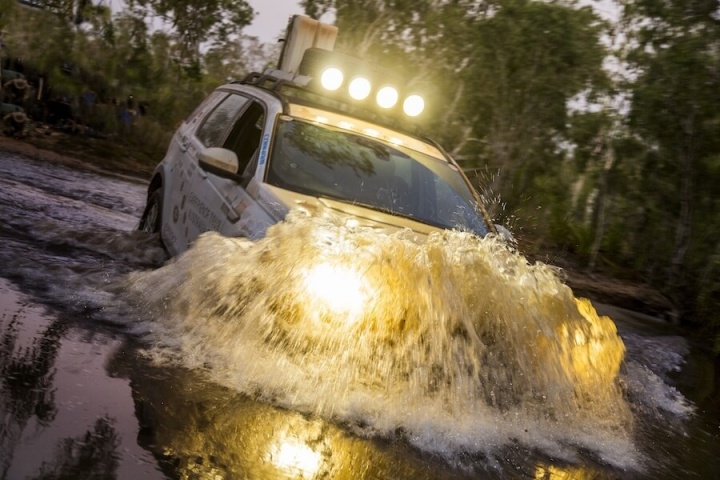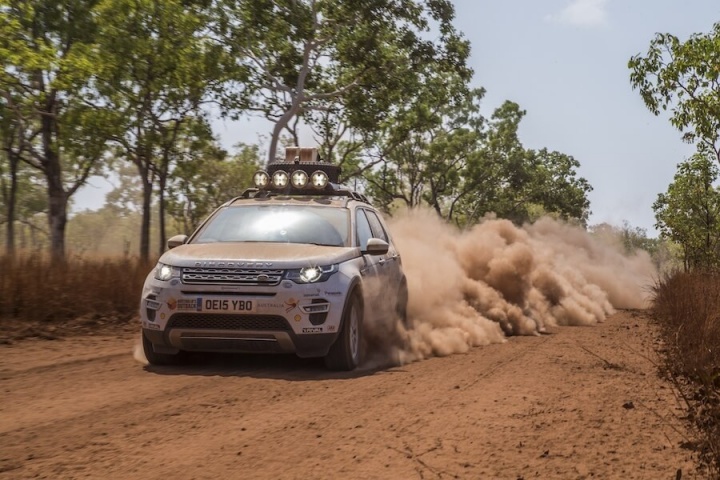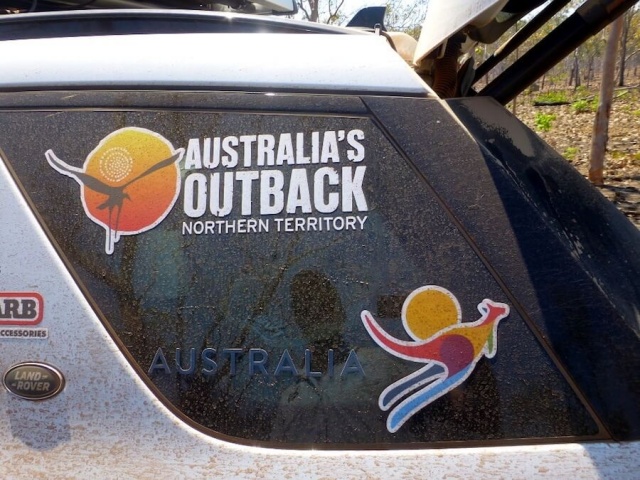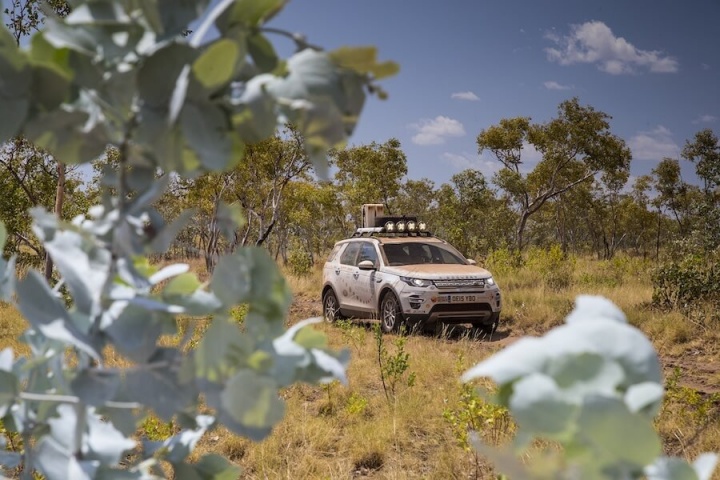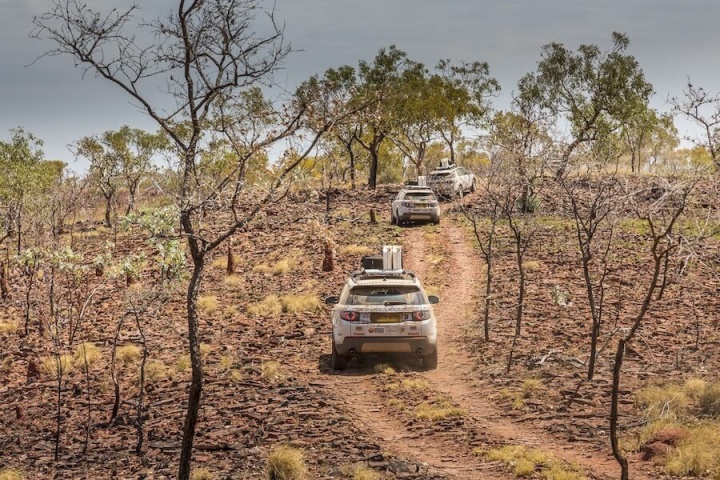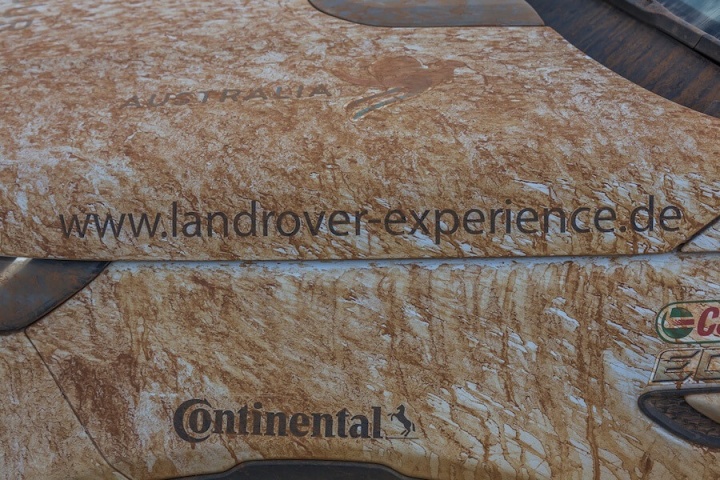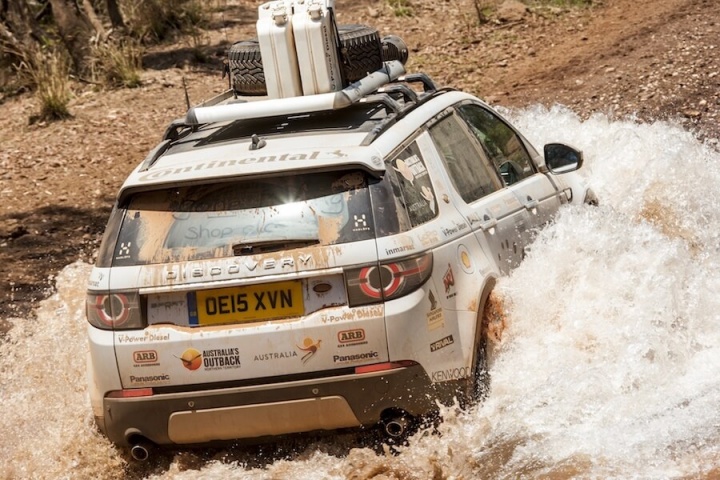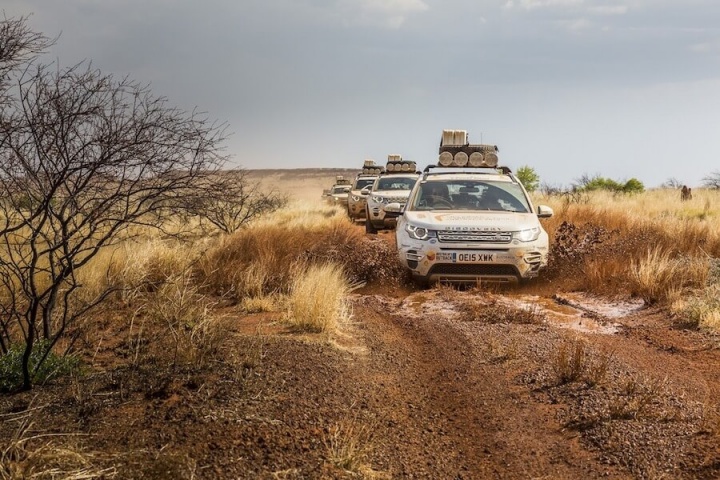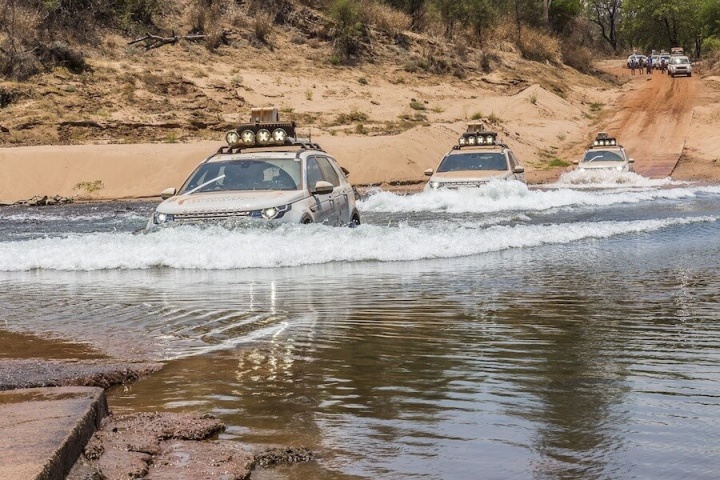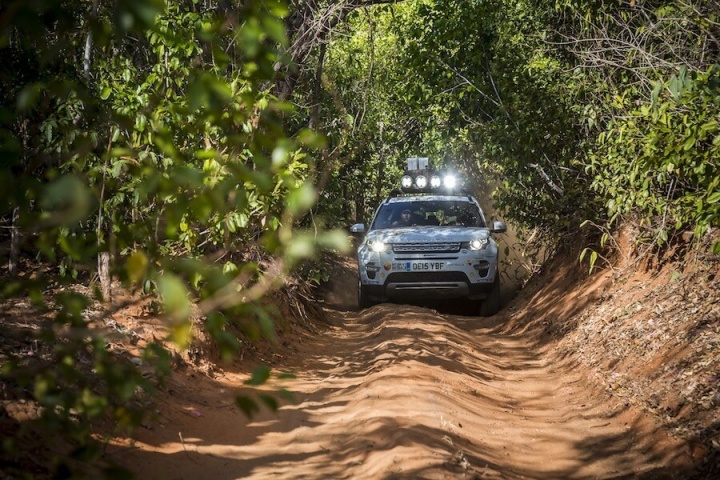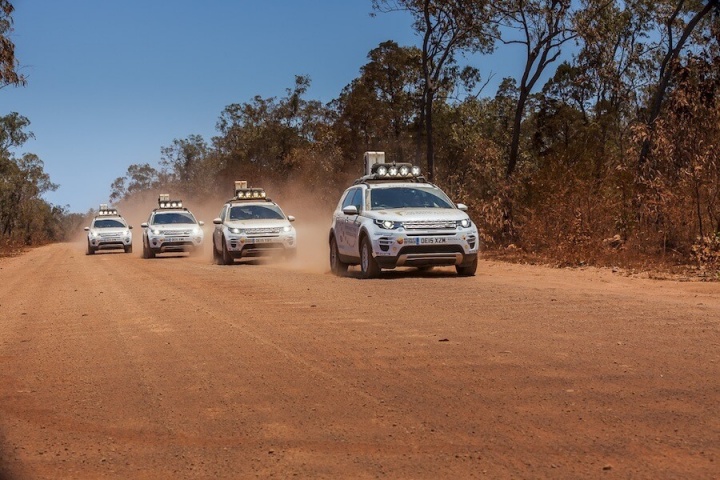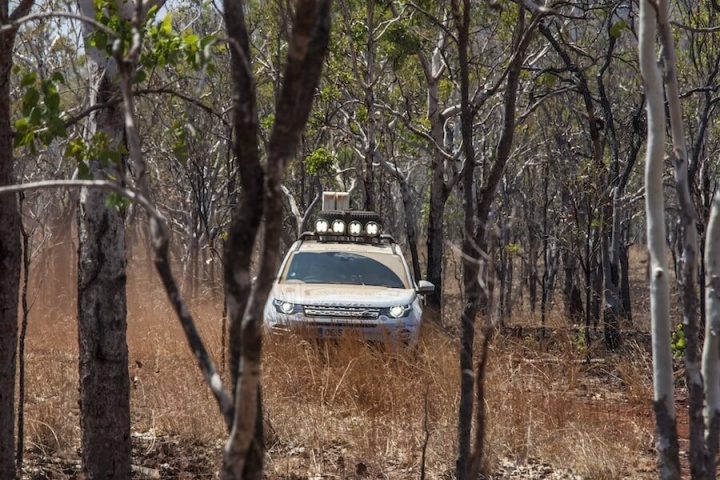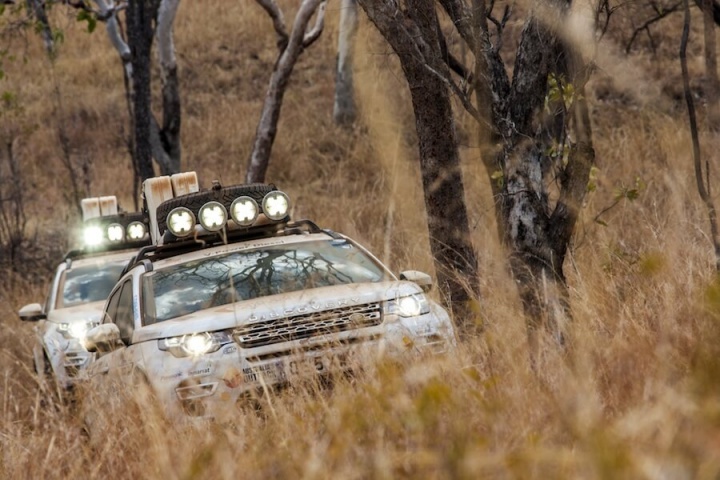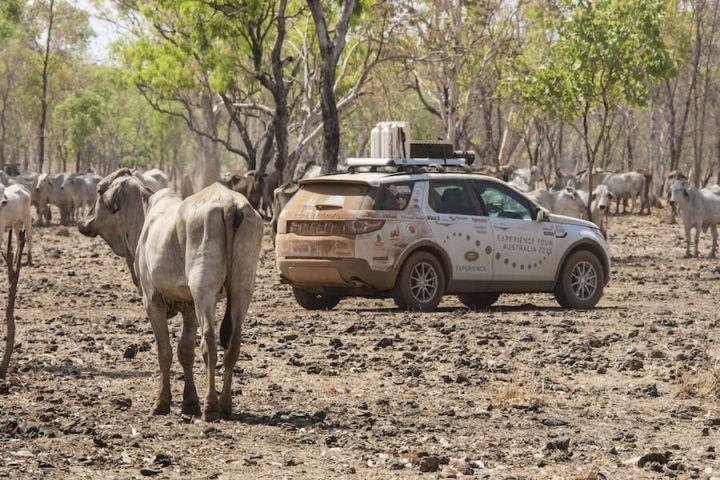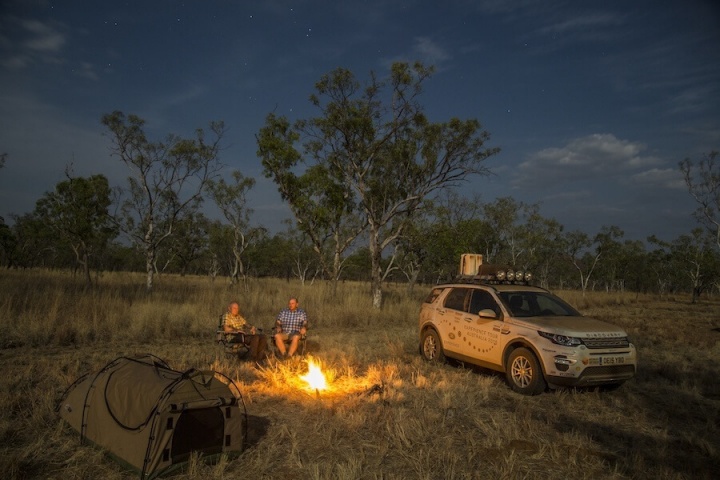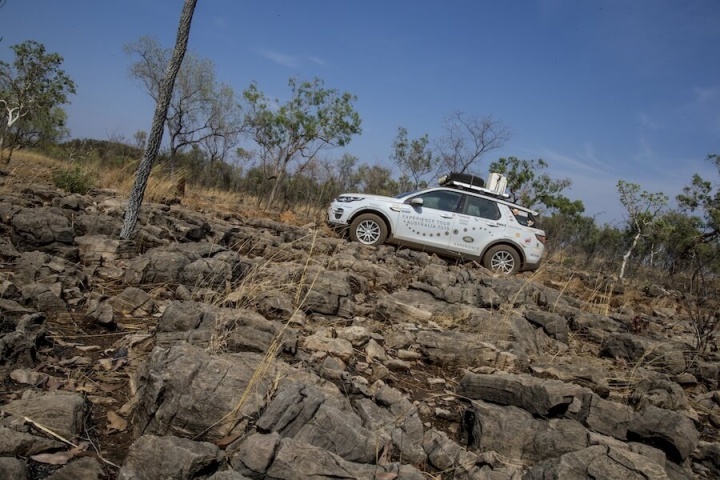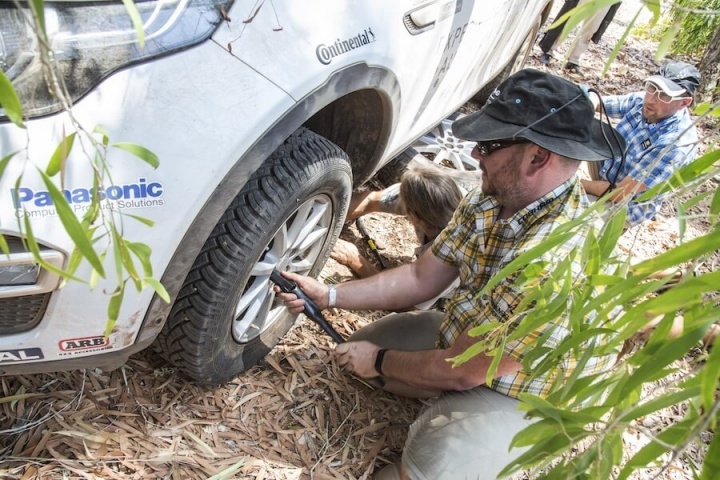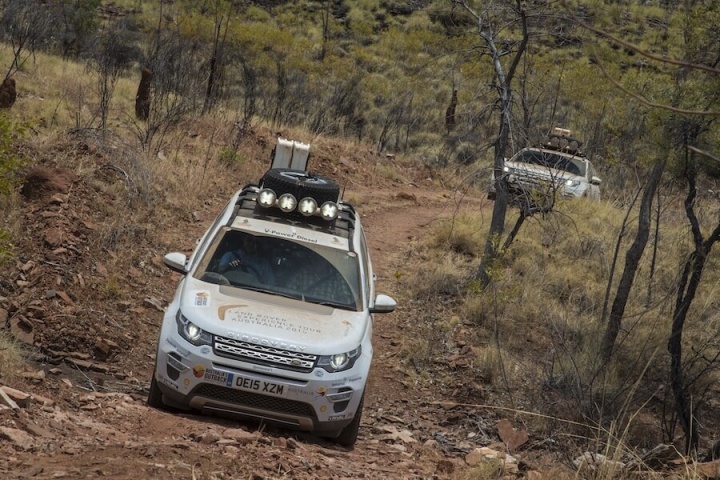Land Rover Discovery Sport gets a new diesel engine; we test it over 1,000km of Australia's tough Outback to make sure it's up to the job of coping with our own roads.
Model tested: Land Rover Discovery Sport TD4 180
Pricing: €tbc
Engine: 2.0-litre four-cylinder turbodiesel
Transmission: nine-speed automatic, four-wheel drive
Body style: five-door, seven-seat SUV
CO2 emissions: 139g/km (Band B2, €280 per annum)
Combined economy: 53.3mpg (5.3 litres/100km)
Top speed: 188km/h
0-100km/h: 8.9 seconds
Power: 180hp at 4,000rpm
Torque: 430Nm at 1,750rpm
Boot space: 150 litres
EuroNCAP rating: 5-star; adult 93%; child 83%; pedestrian 69%; safety assist 82%
One thousand kilometres. That should be enough to get an impression of the model year updates on the Land Rover Discovery Sport. They centre on what's under the bonnet, the MY16 Discovery Sport finally getting the engine it should have had from launch, Jaguar Land Rover's 2.0-litre Ingenium turbodiesel, which sees a useful drop in emissions and an improvement in economy, too. Useful for tax in Ireland, and here in Australia where filling stations are so far apart you really need to plan ahead. We're in the Northern Territory, Australia's Outback. All of which explains why these Discovery Sports feature a few add-ons that might look a little out of place on the school run. There's a roof rack, upon which there's a spare wheel and tyre - Continental Cross Contact ATs being a sensible choice given the conditions - a pair of fuel cans and some supplementary driving lights. Inside, there's a radio, cool box, camping kit, an additional tyre pressure monitoring system and a Garmin GPS navigation system. Not your ordinary media test drive (where usually there are a couple of bottles of water and a route book), but then Australia's Outback is a tougher test than usual.
Tarmac is a luxury, with all but a handful of the 1,000km we'll be travelling done so on what we might recognise as a road. Out here the lines of communication are a bit tougher too, which is why 4x4s aren't a status symbol or fashion accessory, instead they're a necessity. In truth the Land Rover Discover Sport is a bit out of place, it more likely to be seen in Sydney's streets than the Northern Territory's dusty tracks, the more usual form of transport up here being Toyota Land Cruisers, mostly with flatbeds out back. Utility then, is king, along with reliability and durability, though in just getting here the Discovery Sports have already travelled a thousand tough kilometres, and after we've driven our leg - from Katherine to Hooker Creek - there'll be another 1,000km on the odometer.
Out here that's still just scratching the surface, as the enormity of Australia's Northern Territory is difficult to comprehend. Think Spain, France and Italy's land mass combined, with a population of around 250,000. Some 140,000 of those are in Darwin, around 30,000 each in Alice Springs and Palmerston and the rest in the small towns like Katherine, Nhulunby and a handful of others. Neighbours aren't just a friendly wave away then, more often than not they're hundreds of kilometres away.
Tough kilometres, too, the Outback not an environment that's forgiving. Besides the obvious add-ons there's some additional under-body protection for our drive, but otherwise the car we're in is entirely standard. Thankfully that means excellent air conditioning given the heat and humidity; though we're warned by the tour doctor that setting the temperature too low in the car shocks your body when you get out into the heat. Hats, sunglasses and sun cream are a necessity, too, especially if, like me, you've the double disadvantage of pale Celtic skin and a bald head. The interior is all familiar Discovery Sport, but instead of the usual test car cleanliness there's a thin layer of dust on everything. It gets, and is, everywhere, even if the dust the cars kick up from the roads differs in its consistency. It spans the spice rack for colour, from rich cocoa browns and deep red paprika to more muted cumin and near white ground ginger. The lighter that dust is the longer it seems to hang around; white dust, talcum-like in its consistency has the ability to completely blind you, while the darker dust settles as quickly as it's thrown up by those Continental tyres.
The gravel roads aren't too challenging, though there are timely reminders that, come the wet season, they can turn into rivers, as the routes are sporadically marked with depth poles where the roads dip and the water would cross. That's next month, but for now it's as dry as you could imagine, though the air's heavy with humidity in anticipation of that wet season.
Four days of driving and three nights camping out tend to give you a different perspective on your transport. The Discovery Sport becomes a lifeline, not merely a conveyance, carrying everything we need for sustenance and shelter, it doing so with consummate ease. It's telling that even after hours of rough roads and sometimes tricky off-road sections, fatigue levels are low, the Discovery Sport making light work of the tough conditions. Rarely is there any need to dip into the variable off-road functions, it coping with everything in the standard setting, and it's hugely confidence inspiring that, despite its SUV manners on the road, underneath it's still a capable, proper 4x4, and at core a Land Rover.
That new diesel engine is quiet, too, the nine-speed automatic working well in conjunction with it, both for economy and smoothness. The biggest compliment you can give the new engine is you don't think about it, and even out here, where fuel stations are few and far between, that's true of the consumption, which, even on the higher power version tested with the automatic, there isn't an economy penalty for its greater performance. There's the odd testing bump in the road that'll cause a scrape underneath, but otherwise the Discovery Sport climbs, clambers and wades as well as the handful of full-size Discovery support vehicles following us. Switching between the different off-road modes is simplicity itself, when needed, all it requiring is the push of a button.
After four days driving in some tough conditions the Land Rover Discovery Sport hasn't just coped, but it's impressed. It has ridden decently over washboard surfaces, forded river crossings, climbed rock-strewn paths and washed-out roads with aplomb. It'll never need to do anything as challenging here in Ireland, but it's good to know that it can, and the MY16 changes allow it to do so with greater economy and refinement, too. The perfect all-rounder then; if the Discovery Sport can cope out here in the wilds of the Outback it'll breeze the school run, or, indeed, anything else you ask of it.

